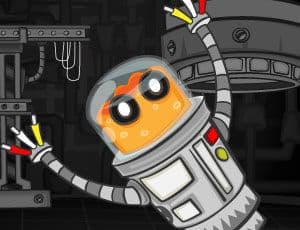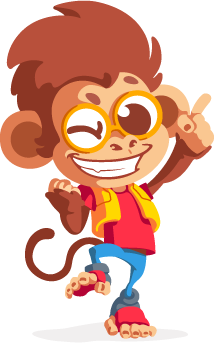Escola Games | Jogos Educativos
https://www.escolagames.com.br
Teacher's support sheet

Operation Robot Run
The Robot needs your help! It must collect all the screws around the factory. In order to do this, it needs to face the mathematical operations on the computers. Are you ready to start this run? The Robot is waiting for you!

Teacher's tips
Level of education: Elementary School
Age: 07 to 10 years
Game created to work with the four operations, offering a different strategy for enriching math classes. Helps in learning and stimulates logical reasoning, making the practice more creative and attractive! According to the objectives and age group of the group, this game has two options of difficulty levels. [FIM-DICA]
Learner outcomes
Solve mathematical problems involving the four operations;
Develop logical-mathematical reasoning;
Stimulate the taste for Mathematics, through playful and pleasurable activities;
Reinforce content worked in the classroom;
Work and develop attitudes of interaction, collaboration and exchange of experiences in groups;
Working on motor skills (controlling the robot using the keyboard);
Exercise logical reasoning, finding the result of operations;
Teachers' goals
Stimulate the taste for Mathematics, through playful and pleasurable activities;
Reinforce content worked in the classroom;
Use different strategies to solve problems;
Increase students' ability to observe, discuss, face and deduce solutions to proposed problem situations;
Work and develop attitudes of interaction, collaboration and exchange of experiences in groups;
Offer situations in which students can analyze, interpret and propose the four basic operations;
Stimulate the student to study the multiplication table and use calculation in the classroom;
Working on motor skills (controlling the robot using the keyboard);
Suggestions of approaches for the teacher
(Suggestion 1) In pairs, children should be challenged to solve different operations, taking the Robot to the computer. It is important to stipulate a minimum number of questions for the children to solve at each time set by the teacher.
Every time an operation appears, the pair must record it on a sheet and, if necessary, use this same sheet to do the calculations and find the answer. Writing down the answer is also important.
Guide the children to exchange ideas and discuss the operation and its result, before typing the answer. If they don't get it right, they will have another chance.
(Suggestion 2) In the classroom, use these records to propose other activities. One of them, very interesting, is to write all the numbers they wrote down, on individual cards. Afterwards, write the graphic signs of the 4 operations on other cards, also individual. Children should form other operations using the cards and then solve them in pairs, trios or groups.
(Suggestion 3) MATHEMATICAL FISHING
Fill an inflatable pool or basin with water, put some fish or ducklings with written operations inside. Use clear tape to cover the operation so you don't run the risk of ink coming out of the pen. Improvise wand with dry twigs. Ask the student to fish the object and answer the operation.
If you can't get these objects from fishing, you can improvise by making EVA ducks and fish. Draw waves on the board and paste the EVA designs with hidden operations. Ask students to choose where to start and develop the activity in the same way.
(Suggestion 4) FLASH CARDS. Cut several pieces of paper into card shapes. On one side, write the problem, like 4x9 for example. On the other side, write the answer to this problem, that is, 36. Just the act of writing the multiples is a multiplication table practice. Time how many cards your child can make in five minutes, for example. Will he be able to exceed that number the next day? Encourage him to overcome his own limits in a fun way.
More about the content
Have you ever heard of the Waldorf Wheel to multiply?
Waldorf wheel to multiply: Inspired by the Waldorf methodology, it is a kind of board with 10 or 11 pegs depending on the model, which represent the numbers from 0 to 9 or from 0 to 10.
The idea is to intertwine the results of each multiplication table with a string or thread that attaches to peg 0. When finished, each multiplication table forms its own shape, a way for children to become familiar with geometry and learn tables more easily.
It is important to note that some models come with templates for each table that children must fill in, while in other cases, it will be the little ones who must discover for themselves.
If you prefer, you can also make your own wheel at home using a sturdy wooden base and colored pegs.
Check out other games to complement the content in a playful way:
Math Master
https://www.bestschoolgames.com/games/mathMaster/
Dino Multiplication Table
https://www.bestschoolgames.com/games/dinoMultiplicationTable/
